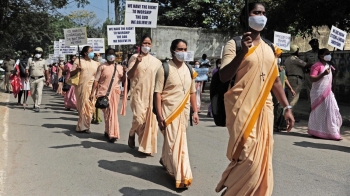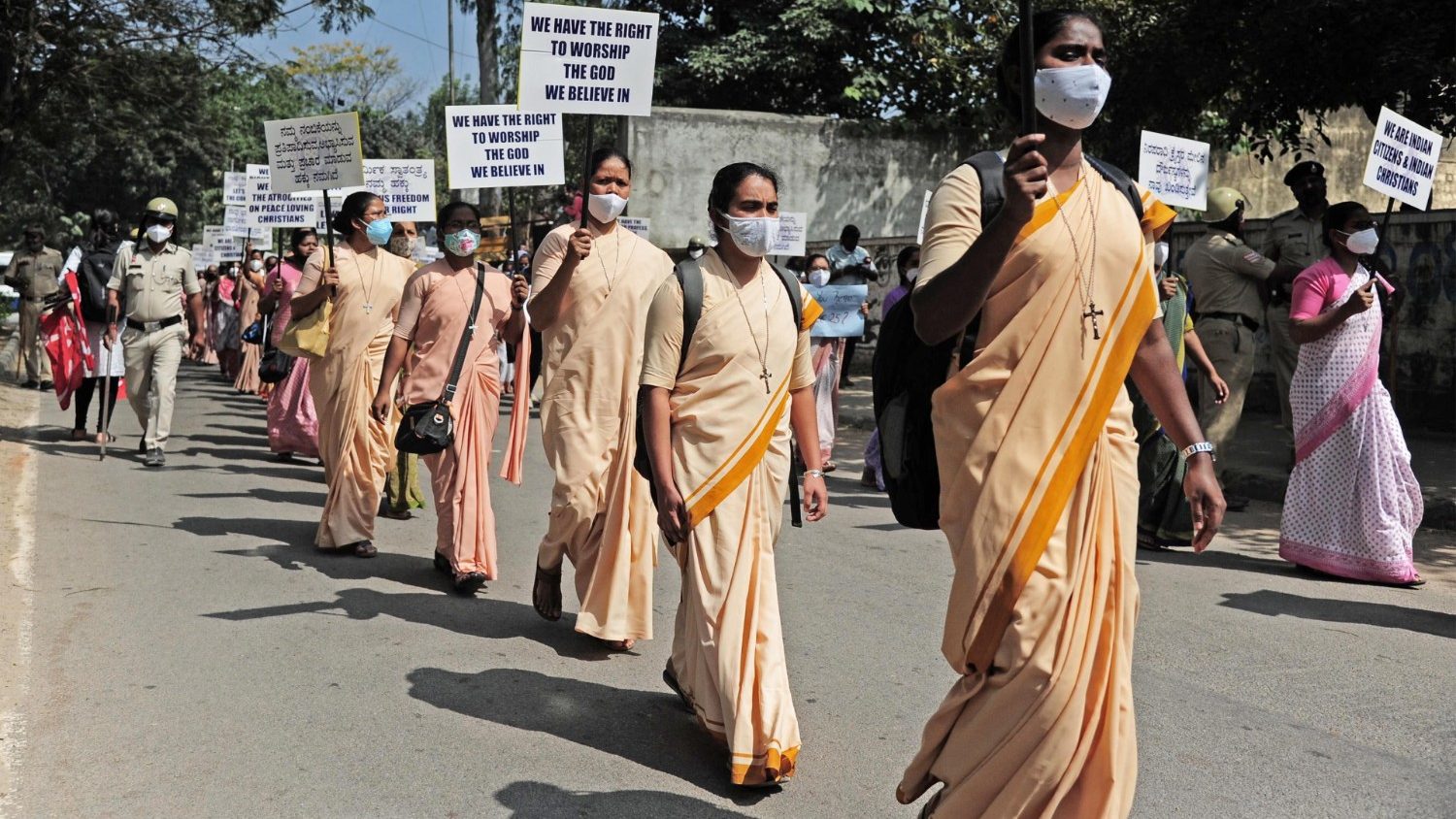
.jpg) Prakash Louis
Prakash Louis

Three leading newspapers of the country, The Hindu, Indian Express and Times of India, reported over 40 incidents of communal riots in 2022 in India. This is 400% increase from 10 such incidents reported in 2021. While mob lynching incidents are concerned, there was no increase as compared to 2021, which remained constant at 15. Out of the 40 incidents of communal riots, 19 took place owing to processions taken out by Hindu right-wing organizations in various places.
As argued in Millie Gazette, instead of controlling the riots, the response of the state was to further the objective of the rioters, by inflicting maximum damages to the Muslims selectively. This was done by the state by demolishing their properties using state owned equipment like the bulldozers, JCBs and other heavy machineries. Further, the state also falsely branded the Muslims as rioters and stone pelters, which according to fact finding reports of civil society organizations were baseless allegations. The state allowed demonization of Muslims and Christians and hate speeches against them, making them vulnerable to hate crimes, mob lynching and targets during communal riots.
On the one hand, communal violence is on the increase. On the other hand, the country is slipping in all indicators nationally and internationally. In a recently released report, 39 of world's 50 most polluted cities are in India. The data from 131 countries was taken from over 30,000 ground-based monitors, either government or non-government operated. The ranking was decided by Swiss firm IQAir in its 'World Air Quality Report' released this month. Neither the government nor the media has anything to say about this. But call for ‘genocide of the minorities’ is heard from the Hindutva forces.
In a report published by Pew Research Center as part of the Pew-Templeton Global Religious Futures project, in 2022, titled, ‘Religion in India: Tolerance and Segregation’, the clear wedge that the Hindutva forces have managed to drive deep into the Indian mind and society comes out clearly. It is something positive to hear that the Indians feel they have religious freedom and respecting all religions as a core value. But at the same time, Indians want to maintain the religious separation.
Many Indians, across a range of religious groups, say it is very important to stop people in their community from marrying into other religious groups. Roughly two-thirds of Hindus in India want to prevent inter-religious marriages of Hindu women (67%) or Hindu men (65%). Inter-caste and inter-religious marriages were considered to be one of the values to bring unity and harmony among various groups of people. But now that is seen as a threat to one’s own community forgetting what good it can do to the country.
The BJP is promoting a Hindu nationalist ideology. With systematically planned anti-minority sentiments, the divide between various religious groups has become deeper and unrepairable. The survey finds that Hindus tend to see their religious identity and Indian national identity as closely intertwined: Nearly two-thirds of Hindus (64%) say it is very important to be Hindu to be “truly” Indian. Most Hindus (59%) also link Indian identity with being able to speak Hindi. Thus, a regimented mindset is created in an already fragmented society and country.
As per the 8th Schedule of the Constitution of India, there are 22 languages which are officially approved and are in use in the country. Overlooking these historical and existential facts, the majority Hindu community (80%) has been straight-jacketed to believe and speak that it is very important to be Hindu to be truly Indian, and also it is very important to speak Hindi to be truly Indian. Thus, the slogan, ‘One Nation, One Religion, One Culture, One Language and One Leader’ has succeeded in homogenising the Hindu majority against the hapless minority.
In the 80s there was the slogan, ‘pahalekasaai aur uske baad iisaai’, that is, ‘first Muslims and then Christians’ will be dealt with. But now there is a demand for genocide. This demand is even more clearly and categorically articulated after the Gujarat pogrom. Irrespective of this, India’s Muslims almost unanimously say they are very proud to be Indian (95%), and they express great enthusiasm for Indian culture. Further, most Muslims across the country (65%), along with an identical share of Hindus (65%), see communal violence as a serious national problem.
In this extremely devastating and depressing national scenario, two intertwined facts of the Indian society and country need to be highlighted. Indians are fundamentally and foundationally multi-religious, multi-cultural, multi-linguistic and have been living for centuries side by side. But in the last few decades, there are consistent attempts by the Hindutva forces for electoral gains to divide religious communities by demonising the minority Muslims and Christians as the ‘enemy other’.
Secondly, as stated above statistically, over two-thirds of Indians pointedly state that communal hatred, crime and violence are serious national problems. Ordinary citizens are reeling under price rise systematically created by the Hindutva ruling class. For instance, cooking gas cylinder was Rs. 410.50 in 2014 when the BJP came to power in the centre. But in 2023 it has tripled to Rs. 1,103.00. This is the double game that has become the mainstay of this regime. First, they make promises to make things cheaper, easier, closer, comfortable, etc. Then they go back on these promises and leave the citizens in the lurch.
In the past, social scientists talked about the nexus between landlords, upper castes, officials and police. But now the Hindutva forces have succeeded in using communal hatred and violence as a ‘weapon for mass destruction of the minorities.’ Forgetting about how one’s public projection of religious practices may be affecting the citizens of other religions, the majority Hindus are regimented to oppose anything and everything of the minority communities. In this the Hindutva leaders have gone to the ridiculous level of stating that the call for prayer, the hijab that the Muslim women wear, the sale of meat, food habits, educational institutions, prayer and worship are antithetical to the country.
An aggressive individualism of the political leaders has collectively transferred to individualism of the majority community and sectarian issues are highlighted and sympathy ensured and aggression on the ‘other’ is unleashed. The country becomes the point of international ridicule when the leadership projects that it is pained when the temples are attacked outside India. But they keep a studied silence when customs, practices, beliefs and rights as enshrined in the Constitution are denied to certain sections of the people in the country. May be, we have to pray with Rabindranath Tagore, “Into that heaven of freedom and right let my country awake”.